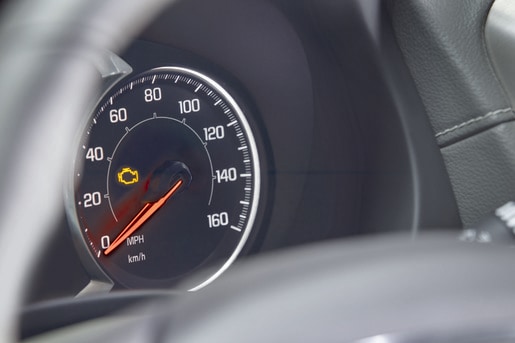
The check engine light – that ominous little symbol on your dashboard that can strike fear into the hearts of even the most experienced drivers. When it illuminates, it's natural to feel a sense of concern and uncertainty about what might be wrong with your vehicle. However, it's essential to approach the situation calmly and methodically. In this guide, we'll walk you through the steps to take when your check engine light comes on, helping you navigate this common automotive issue with confidence.
Step 1: Don't Panic First and foremost, don't panic. While the check engine light indicates that there's a problem with your vehicle, it doesn't necessarily mean that your car is on the verge of breaking down. In many cases, the issue triggering the light is minor and can be addressed relatively easily.
Step 2: Check for Immediate Issues Take a moment to assess your vehicle's performance and look for any noticeable signs of trouble. Is the car running smoothly, or do you notice any unusual noises, vibrations, or odors? Check your gauges for any indications of overheating or low oil pressure. If you detect any immediate problems that could pose a safety risk, such as engine knocking or a sudden loss of power, pull over to a safe location and turn off the engine.
Step 3: Tighten the Gas Cap Believe it or not, a loose or faulty gas cap is one of the most common reasons for a check engine light to illuminate. Before jumping to more serious conclusions, check to ensure that your gas cap is securely tightened. If it's loose, tighten it until you hear a clicking sound, then drive your car for a short distance to see if the light goes off. In many cases, this simple fix can resolve the issue.
Step 4: Use a Diagnostic Tool If tightening the gas cap doesn't extinguish the check engine light, it's time to dive deeper into the problem. Consider investing in an OBD-II (On-Board Diagnostics) diagnostic tool, which plugs into your car's OBD-II port (usually located under the dashboard) and reads the codes stored in the vehicle's computer system. Kempton Chevrolet's certified service department can also run this analysis if you do not want to invest in a diagnostic tool. These codes provide valuable insights into the specific issue triggering the check engine light, helping you pinpoint the problem more accurately.
Step 5: Interpret the Diagnostic Codes Once you've retrieved the diagnostic codes, you'll need to interpret them to understand what they mean. It's essential to remember that the codes themselves don't necessarily pinpoint the exact cause of the problem – they simply provide a starting point for diagnosis. Refer to your vehicle's service manual or consult with one of our qualified mechanics to interpret the codes and determine the appropriate course of action.
Step 6: Address the Underlying Issue Based on the diagnostic codes and additional troubleshooting, take the necessary steps to address the underlying issue causing the check engine light to illuminate. Depending on the nature of the problem, this may involve anything from replacing a faulty sensor or ignition coil to addressing more complex issues related to the engine or emissions system. If you're comfortable with DIY repairs and have the necessary skills and tools, you may be able to tackle the problem yourself. However, for more complicated issues or if you're unsure about how to proceed, it's best to enlist the help of a qualified mechanic.
Step 7: Monitor Your Vehicle After addressing the underlying issue, monitor your vehicle closely to ensure that the check engine light remains off and that the problem has been resolved. Drive your car for a few days under normal conditions to see if the light stays off or if any additional symptoms arise. If the light continues to illuminate or if you experience persistent issues with your vehicle's performance, it may be necessary to revisit the diagnosis and explore further repairs.
While the check engine light can be a source of anxiety for many drivers, it's important to approach it with a calm and methodical mindset. By following these steps and taking the appropriate actions, you can effectively diagnose and address the underlying issues triggering the light, restoring your vehicle's performance and peace of mind on the road. Remember, when in doubt, don't hesitate to seek assistance from a qualified mechanic or automotive professional who can provide expert guidance and support. With patience, diligence, and a willingness to troubleshoot, you can overcome the challenge of a check engine light and keep your vehicle running smoothly for miles to come.